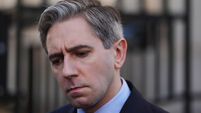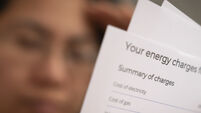Oliver Mangan: Markets may be pricing in too many ECB rate hikes this year

The ECB policy statement immediately after last week’s governing council meeting did not signal much of a change in its thinking and for that reason the press conference that followed caused quite a stir.
President Christine Lagarde demurred on continuing to push back on market expectations of rate hikes in late 2022, and as a result the ECB opened the door for rate hikes before the end of the year.
That is a big shift. It certainly caught the markets off guard even though they have been doubtful for some time that the ECB would keep rates on hold in 2022, especially with headline inflation having risen to around 5%, and with other central banks gearing up for a series of rate increases this year.
The euro jumped by around 1.5%, while interest rate futures contracts hardened further, and eurozone bond yields rose by 20 to 30 basis points. The spread between core and periphery bond yields widened also.
The catalyst for the changed ECB outlook is the deteriorating inflation picture, including the renewed surge in energy prices over the winter. The ECB noted that inflation has continued to surprise to the upside.
We would also point out that the labour market is tightening more quickly than anticipated, with the unemployment rate in the eurozone falling to a record low of 7% in December.
Disruptions to supply chains are also lasting longer than forecast. As a result, the ECB acknowledged the risks to the inflation outlook are tilted to the upside, particularly in the near term.
Greater clarity on the monetary policy outlook will be provided at the ECB’s next policy meeting in March, when it will be able to consider updated staff macroeconomic forecasts. There is now a clear risk that it will announce an acceleration of the tapering or rundown of its quantitative easing bond-buying programme.
The ECB has since stated again that it expects net purchases would end shortly before it starts raising interest rates. Thus accelerating tapering would open up the possibility of rate hikes to begin in the autumn — which would be the first ECB rate hikes in over a decade.
The markets certainly think so and are now close to pricing in two full 25 basis point rate hikes for September and December, which would take the key deposit rate up to zero. More rate increases are expected in 2023 — with futures contracts indicating that another 50 basis points of tightening at least is anticipated.
Of course, this is very much contingent on the evolution of inflation this year and in particular energy prices. We also would point out that core inflation in the eurozone is running at 2.5%, much lower than in the US and UK.
Given these considerations, markets may now be pricing in too much rate tightening for later this year.
- Oliver Mangan is chief economist at AIB














